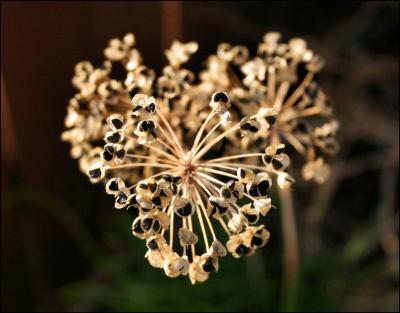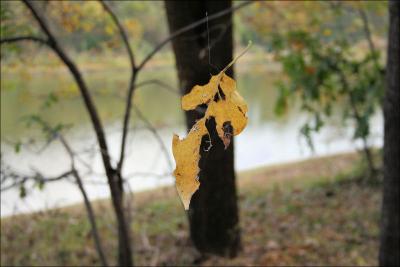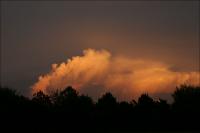Autumn
Next Entries »Sweetgum Seed Pods
Wednesday, March 4th, 2009
Sweetgum Seed Pods, 11H x 11W x 3D inches acrylics on canvas, wrapped sides painted. Signature is on the side, so one is superimposed here on the front. Frame unnecessary. Hang on a wall or display on a flat surface.
Please pass the peace
Saturday, February 14th, 2009
Garlic Chive seed head, heart-shaped growth
Sumac Bushes director’s chair started
Tuesday, January 6th, 2009
Sumac Bushes director’s chair started. Back and seat of 47H x 22W x 16D inches acrylics on canvas, will be varnished. Up-cycled tall wood director’s chair, work in progress, functional art. The wood will be painted a cherry color.
Shadows of Summer update
Monday, September 22nd, 2008

Shadows of Summer, 60H x 40W x 3D inches acrylics on canvas.
Seasonal treasures
Sunday, November 11th, 2007
While photographing the filigree on many of the decaying oak leaves in a park forest, leaning backwards with my head in the branches, a little green snake struck out at me, the delicate body about 8″ long and no wider than a baby finger. I wrote to the Biology Dept. at Texas University, and they identified it as a Rough Green Snake – Opheodrys aestivus – it’s non-venomous.
Walking back home completely happy to have chosen that path, expecting no more treasure for the day, a leaf twirled in the breeze, hanging from a spider web strand.
Gold In The Mountains 01
Sunday, November 4th, 2007
Gold In The Mountains 01, finished – 20H x 16W inches acrylics on canvas. Has 28H x 24W inches dark-stained antique frame with gold trim
Started late in 2005, Gold In The Mountains 01 has evolved through many changes to achieve the finished painting above. The first thumbnail shows the painting at a stage where I thought it finished so entered it into Artjury.com’s 2006 Spring/Summer online exhibition. It was accepted, and at the time I liked the larger areas of flat orange-gold, but about six months later I thought the work needed more depth, and the dark branch across the upper portion stood out, so I began a long process of scrubbing off, building back up, scraping and layering paint, repainting, etc. The piece reached a few different stages where it could have been called finished, but I was not entirely pleased, so kept searching. Here are a few stages in the transformation of Gold In The Mountains 01:
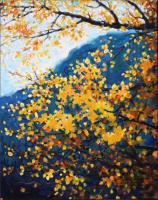 |
 |
 |
|||
 |
 |
 |
North Carolina
Monday, October 1st, 2007
 Alain and I flew to North Carolina for three days ( a little business trip and I tagged along—he threatened to take my camera with him and I was sure I could not manage without it!) We drove around the eastern countryside between Raleigh and Washington (NC) through old, old towns (it takes a looong time for wooden doors to shred, and a looong time for conditions to be just right for vines to sprout then twirl round and round, entwined and squished between panes of glass!) …old, old farms: tobacco, cotton, peanuts.. and an interesting gas station.
Alain and I flew to North Carolina for three days ( a little business trip and I tagged along—he threatened to take my camera with him and I was sure I could not manage without it!) We drove around the eastern countryside between Raleigh and Washington (NC) through old, old towns (it takes a looong time for wooden doors to shred, and a looong time for conditions to be just right for vines to sprout then twirl round and round, entwined and squished between panes of glass!) …old, old farms: tobacco, cotton, peanuts.. and an interesting gas station.
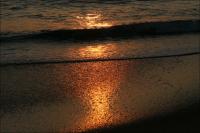 There is a lot of history in NC – fossil, human/settlers and Civil War history. We stayed at Kitty Hawk (first flight – Wright bros.) and walked the shores at various places along the narrow coast of the Outer Banks. We watched the sun rise and dolphins feed – too far away for good photos, even with the telephoto. As soon as the sun rose they swam away.
There is a lot of history in NC – fossil, human/settlers and Civil War history. We stayed at Kitty Hawk (first flight – Wright bros.) and walked the shores at various places along the narrow coast of the Outer Banks. We watched the sun rise and dolphins feed – too far away for good photos, even with the telephoto. As soon as the sun rose they swam away.
Along Cape Hatteras, groups of Grackles ate ripe grass seeds, bouncing up and down on the stems, their bodies too heavy for the tall grasses.
On Pony Island a large sand crab tried to buff up and look tough, but it was quite vulnerable there out in the open; all the other crabs scurried into holes but this one stayed, trying to hide in footprints, which offered no protection if we had been birds looking for a hearty meal.
Great fun to watch the behavior for a while. It’s clearly outlined crab-shaped shadow following it everywhere, creating a few graphic photos that are perfect resource material for drawings and paintings but do not stand alone as good photography because it was moving so fast.
Just off the 2 1/2 hr. long ferry at Swan Quarter, and sunset with a short, wide rainbow after a storm that we managed to escape and watch from the better side.
NO OLF – we were curious about this sign in many people’s yards. The following website shows a video describing how the U.S. Navy has purchased over 30,000 acres of land near the eastern North Carolina coast, planning to move their pilot training program from Virginia.
Part of the huge controversy is that over 75 families would be forced to leave their homes, many of them farming that land for generations. The human issues are enough, but the cause and effect on the wildlife and ecology would be drastic and irreparable. Thousands of ducks and large flocks of snow geese that feed in the area annually would no longer have sanctuary. The large birds would also be a danger to the jets.
http://www.youtube.com/watch?v=3XDmC1LD1Kc
Calgary in September
Thursday, May 18th, 2006

Calgary in September, 14H x 11W inches oil pastels on paper, 3-inch-wide white double mat and 26H x 22W inch white custom-built white wood frame with crackle finish. Part of the Paper Places series.
Post-dated note: Won Second Place in the Paintings category in Plano Art Association’s annual One-Two-Five Show Exhibition in Plano, Texas April 11 – May 8, 2007. I think of pastels to be drawings because no brush is involved, but they are commonly categorized in competitions as paintings…heck, if it wins a prize, does it really matter?
Goldenrod
Sunday, April 23rd, 2006
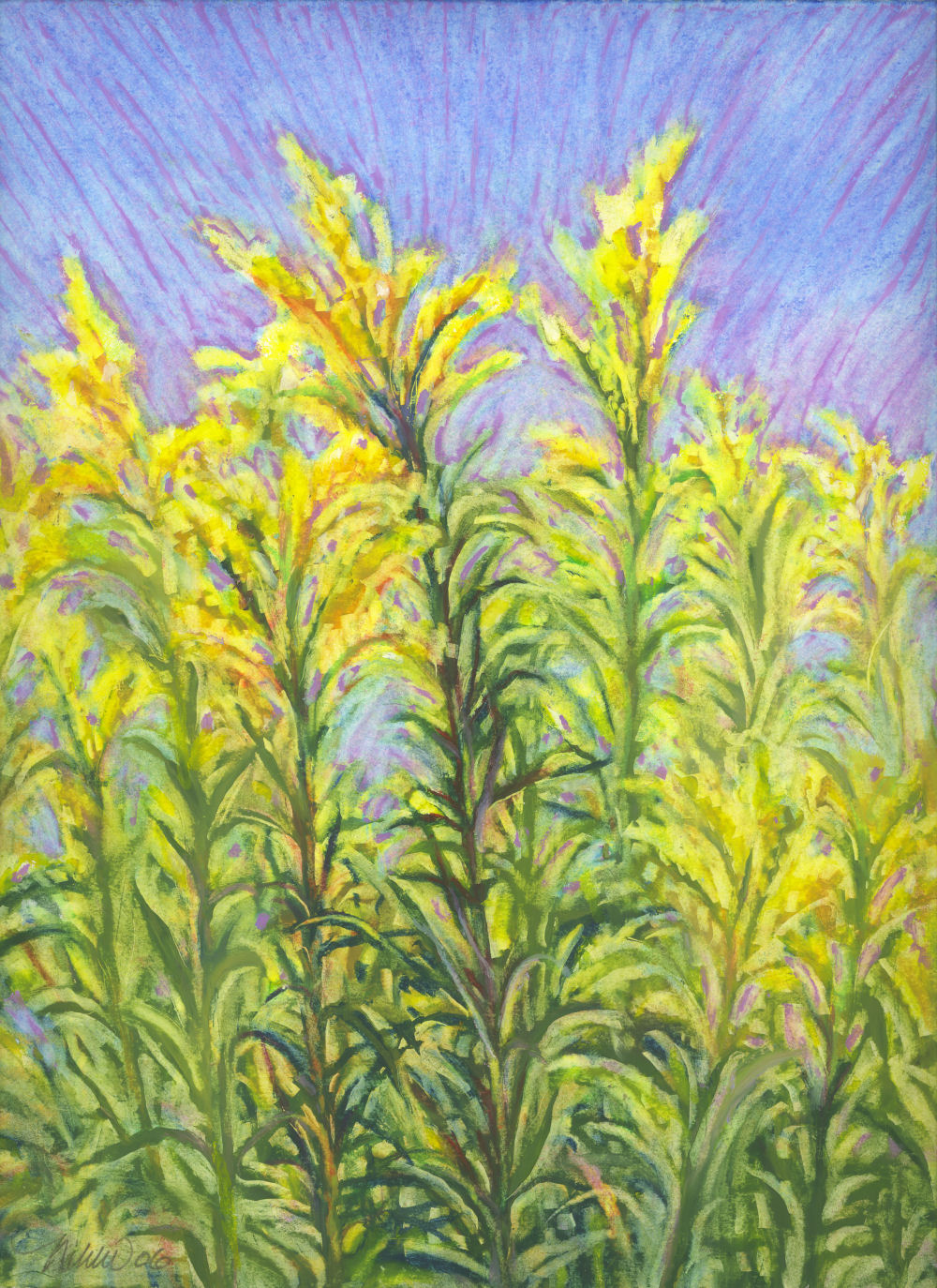
Goldenrod, late Summer in Southern Alberta, 14H x 11W inches oil pastels on paper, 3-inch-wide white double mat and 26H x 22W inch white custom-built white wood frame with crackle finish.
This piece exemplifies the individuality of each in the Paper Places series; not attempting depth or realism so much here as playing with design, contrasting colors and texture.
Gold In The Mountains 02
Sunday, April 2nd, 2006

Gold In The Mountains 02, Kananaskas Valley, Alberta, Canada, 11H x 14W oil pastels on paper, 3-inch-wide white double mat and 26H x 22W inch white custom-built white wood frame with crackle finish.
Aspen / Poplar trees in the Rocky Mountains during Autumn display large yellow-gold leaf masses, represented here with strokes in a diagonal direction. Textures in varying directions add interest, as in tree trunks marked vertically across the entire page, grounding the drawing as a whole with regard to composition. The green-black portion displays the vertical growth of evergreens. Horizontal strokes were appropriate for the mountain, with the golden glow of distant poplars softening its nature and place it back in distance.




